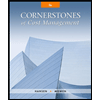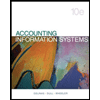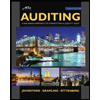OSH305-W1A2
docx
keyboard_arrow_up
School
Eastern Kentucky University *
*We aren’t endorsed by this school
Course
305
Subject
Accounting
Date
Feb 20, 2024
Type
docx
Pages
3
Uploaded by BrigadierFreedomBat12
OSH 305 Hazardous Materials
Week 1 Assignment 2 (W1 A2)
Hazardous Materials/Hazardous Materials Definition(s)
(50 points)
Directions:
Many governmental agencies regulate hazardous materials
(EPA, OSHA, NFPA, DOT).
The term hazardous materials
are not universal defined among governmental agencies. Your assignment is to research how individual governmental agencies define the term hazardous materials compare and contrast the definitions. You are then to take the best parts of each and provide your own definitions based on your research.
HINT:
Go to the governmental website or the regulation which they enforce to find the definitions.
Section 1. (40 points total)
Organization(s)
(a)
Hazardous Material(s) definition
(b)
Hazardous Substance definition
*Provide reference (weblink if appropriate) in this
section under the definition:
Comments concerning definitions
(a)
Is it appropriate? Why/why not?
(b)
Is it lacking information? Why/why not?
(30 points total)
Environmental Protection Agency (EPA)
a.)
A broad term that includes all substances that can be harmful to people or the environment; toxic substances, hazardous materials and other similar terms are subsets of hazardous substances.
US EPA Search
b.) Any material that poses a threat to public health and/or the environment. Typical hazardous substances are materials that are toxic, corrosive, ignitable, explosive, or chemically reactive.
US EPA Search
This is appropriate. These definitions cover multiple aspects of what a hazard could be, and there is overlap between the two definitions. I do not think these lack information from a definition standpoint. The definitions are broad and it may be hard
for someone to interpret a specific material, but these definitions cover any possible hazard. Department of Transportation (DOT)
a.
) A hazardous material is defined by the Department of Transportation (DOT) as “a substance or material that the Secretary of Transportation has determined is capable of posing an unreasonable risk to health, safety, and property when transported in commerce, and has been so designated.” This includes hazardous substances, hazardous wastes, marine pollutants, and elevated temperature materials.
DOT Hazardous Materials – Understanding the Core Requirements (uscompliance.com)
b.) From what I can find, DOT groups hazardous materials and hazardous substances together and as the same definition. I do believe this is appropriate. I think what the DOT seems to do by grouping hazardous substances and hazardous materials together is a good idea when it comes to writing standards or regulations. This takes guesswork out and makes it to where the DOT does not have to worry about two separate categories. I do not think these lack
information, for the same reason the EPA’s definitions do not lack information. They cover as much as they can without being too
specific, in case anyone tries to work around
the definition.
Occupational Safety and Health Administration (OSHA)
a.
) (OSHA) defines hazardous materials as “any substance or chemical which is hazardous to people’s health or is physically hazardous.”
What Defines a Hazardous Material? | MLI I would say that these are appropriate. I think this is a different approach than the EPA or DOT, but still acceptable and reaches a large amount of materials or substances. I 1
Environmental
b.)
Hazardous substance
means any substance designated or listed under paragraphs (A) through (D) of this definition, exposure to which results or may result in adverse affects on the health or safety of employees:
(A) Any substance defined under section 103(14) of the Comprehensive Environmental Response Compensation and Liability Act (CERCLA) (42 U.S.C.
9601).
(B) Any biological agent and other disease-causing agent which after release into the environment and upon exposure, ingestion,
inhalation, or assimilation into any person, either directly from the environment or indirectly by ingestion through
food chains, will or may reasonably be anticipated to cause death, disease, behavioral abnormalities, cancer, genetic mutation, physiological malfunctions (including malfunctions in reproduction) or physical deformations in such persons or their offspring;
(C) Any substance listed by the U.S. Department of Transportation as hazardous materials under 49 CFR 172.101 and appendices; and
(D) Hazardous waste as herein defined.
1910.120 - Hazardous waste operations and emergency response. | Occupational Safety and Health Administration (osha.gov)
do think these lacking some information. For
a hazardous material, “people’s health or is physically hazardous” seems a little controversial, since health is considered a physical or biological hazard, but the definition goes on to say physically hazardous. I think this makes some of the delineation between the two definitions blurry.
Comments concerning definitions comparing and contrasting the various definitions (10 points)
Compare and contrast the all the organizations provided in the comments section:
Both the EPA and DOT seem to relate hazardous materials and hazardous substances as one in the same. I feel like this
is ideal as the terms can cover the same materials and is not specific. While being broad can often be seen as something that is
not great for a definition, in this case it allows the two agencies to cover multiple forms of hazards. OSHA seems to make a distinction that a hazardous material is something that causes physical harm, and a hazardous substance causes health responses. I think these definitions are not 2
ideal as it makes it important for them to cover each title when writing standards covering specific chemicals, as there are many chemicals that could fall under both categories. Section 2. (10 points)
(a)
Provide a NEW Hazardous Material(s) definition using your knowledge gained from the information provided above.
Using definition(s) provided above or any other found
(10 points)
A hazardous material is any form of material, substance, or chemical that could possibly cause adverse effects the environment or
to a person’s health through physical, biological, or other means.
3
Your preview ends here
Eager to read complete document? Join bartleby learn and gain access to the full version
- Access to all documents
- Unlimited textbook solutions
- 24/7 expert homework help
Related Documents
Related Questions
Sh9
arrow_forward
21-36 AT-C Section 315. "Compliance Attestation." allows a practitioner to perform agreed-upon procedures to assist users in evaluating management's written asser- tions about (1) the entity's compliance with specified requirements. (2) the effective- ness of the entity's internal control over compliance, or (3) both. Required: a. Read AT-C Section 315 and then discuss how a practitioner would conduct an agreed-upon procedures engagement to evaluate an entity's written assertion that it was in compliance
arrow_forward
Complete a through f
arrow_forward
The following items are listed in an environmental financial statement (issued as part of an environmental progress report):
Environmental benefits (savings, income, and cost avoidance):
Ozone-depleting substances cost reductions
Hazardous waste disposal cost reductions
Hazardous waste material cost reductions
Nonhazardous waste disposal cost reductions
Nonhazardous waste material cost reductions
Recycling income
Energy conservation cost savings
Packaging cost reductions
Environmental costs:
Corporate-level administrative costs
Auditor fees
Environmental engineering
Facility professionals and programs
Packaging professionals and programs for packaging reductions
Pollution controls: Operations and maintenance
Pollution controls: Depreciation
Attorney fees for cleanup claims, and notices of violations (NOVs)
Settlements of government claims
Waste disposal
Environmental taxes for packaging
Remediation/Cleanup: On-site
Remediation/Cleanup: Off-site
In the environmental benefits section…
arrow_forward
The following items are listed in an environmental financial statement (issued as part of an environmental progress report):
Environmental benefits (savings, income, and cost avoidance):
Ozone-depleting substances cost reductions
Hazardous waste disposal cost reductions
Hazardous waste material cost reductions
Nonhazardous waste disposal cost reductions
Nonhazardous waste material cost reductions
Recycling income
Energy conservation cost savings
Packaging cost reductions
Environmental costs:
Corporate-level administrative costs
Auditor fees
Environmental engineering
Facility professionals and programs
Packaging professionals and programs for packaging reductions
Pollution controls: Operations and maintenance
Pollution controls: Depreciation
Attorney fees for cleanup claims, and notices of violations (NOVs)
Settlements of government claims
Waste disposal
Environmental taxes for packaging
Remediation/Cleanup: On-site
Remediation/Cleanup: Off-site
1. Classify each item in the…
arrow_forward
Chapter 4 Pg. 318
Facility, Product, Batch and Unit Levels.Would you please explain in great detail the different levels and the role they play, and provide examples for each, good examples please. Also, there is a question below about utilities that I need answered. Please give GREAT examples for each level.
Also what would utitilies for the facility fall under? Which of the 4 categories
arrow_forward
a) ISA 315 Identifying and Assessing the Risks of Material Misstatement through Understanding the Entity andIts Environment describes the five components of an entity’s internal control system.
Critically explain the relationship between the FIVE components of an entity’s internal control system.You are an Assistant Audit Manager of Abromovich & Co and are in the process of reviewing the control testing completed on the payroll system of Khelsea Industries Co (Khelsea), as well as preparing the audit programmes for the final audit.Khelsea operate several chemical processing factories across the country, it manufactures 24 hours a day, seven days a week and employees work a standard shift of eight hours and are paid for hours worked at an hourly rate. Factory employees are paid weekly, with approximately 20% being paid by bank transfer and 80% in cash; the different payment methods are due to employee preferences and Khelsea has no plans to change these methods.Factory staff are…
arrow_forward
answer in text form please (without image)
arrow_forward
Chapter 4 Pg. 318
Facility, Product, Batch and Unit Levels.
Would you please explain and give examples for the different levels found in Activity Based Accounting. Also what would utitilies for the facility fall under? Which of the 4 categories
arrow_forward
3.
Mercer Asbestos Removal Company removes potentially toxic asbestos Insulation and related products from buildings. There has
been a long-simmering dispute between the company's estimator and the work supervisors. The on-site supervisors claim that the
estimators do not adequately distinguish between routine work, such as removal of asbestos insulation around heating pipes in older
homes, and nonroutine work, such as removing asbestos-contaminated ceiling plaster in industrial buildings. The on-site supervisors
believe that nonroutine work is far more expensive than routine work and should bear higher customer charges. The estimator sums
up his position in this way: "My job is to measure the area to be cleared of asbestos. As directed by top management, I simply multiply
the square footage by $2.50 to determine the bid price. Since our average cost is only $2.01 per square foot, that leaves enough
cushion to take care of the additional costs of nonroutine work that shows up. Besides,…
arrow_forward
SEE MORE QUESTIONS
Recommended textbooks for you

Cornerstones of Cost Management (Cornerstones Ser...
Accounting
ISBN:9781305970663
Author:Don R. Hansen, Maryanne M. Mowen
Publisher:Cengage Learning

Pkg Acc Infor Systems MS VISIO CD
Finance
ISBN:9781133935940
Author:Ulric J. Gelinas
Publisher:CENGAGE L

Accounting Information Systems
Finance
ISBN:9781337552127
Author:Ulric J. Gelinas, Richard B. Dull, Patrick Wheeler, Mary Callahan Hill
Publisher:Cengage Learning

Auditing: A Risk Based-Approach to Conducting a Q...
Accounting
ISBN:9781305080577
Author:Karla M Johnstone, Audrey A. Gramling, Larry E. Rittenberg
Publisher:South-Western College Pub
Related Questions
- Sh9arrow_forward21-36 AT-C Section 315. "Compliance Attestation." allows a practitioner to perform agreed-upon procedures to assist users in evaluating management's written asser- tions about (1) the entity's compliance with specified requirements. (2) the effective- ness of the entity's internal control over compliance, or (3) both. Required: a. Read AT-C Section 315 and then discuss how a practitioner would conduct an agreed-upon procedures engagement to evaluate an entity's written assertion that it was in compliancearrow_forwardComplete a through farrow_forward
- The following items are listed in an environmental financial statement (issued as part of an environmental progress report): Environmental benefits (savings, income, and cost avoidance): Ozone-depleting substances cost reductions Hazardous waste disposal cost reductions Hazardous waste material cost reductions Nonhazardous waste disposal cost reductions Nonhazardous waste material cost reductions Recycling income Energy conservation cost savings Packaging cost reductions Environmental costs: Corporate-level administrative costs Auditor fees Environmental engineering Facility professionals and programs Packaging professionals and programs for packaging reductions Pollution controls: Operations and maintenance Pollution controls: Depreciation Attorney fees for cleanup claims, and notices of violations (NOVs) Settlements of government claims Waste disposal Environmental taxes for packaging Remediation/Cleanup: On-site Remediation/Cleanup: Off-site In the environmental benefits section…arrow_forwardThe following items are listed in an environmental financial statement (issued as part of an environmental progress report): Environmental benefits (savings, income, and cost avoidance): Ozone-depleting substances cost reductions Hazardous waste disposal cost reductions Hazardous waste material cost reductions Nonhazardous waste disposal cost reductions Nonhazardous waste material cost reductions Recycling income Energy conservation cost savings Packaging cost reductions Environmental costs: Corporate-level administrative costs Auditor fees Environmental engineering Facility professionals and programs Packaging professionals and programs for packaging reductions Pollution controls: Operations and maintenance Pollution controls: Depreciation Attorney fees for cleanup claims, and notices of violations (NOVs) Settlements of government claims Waste disposal Environmental taxes for packaging Remediation/Cleanup: On-site Remediation/Cleanup: Off-site 1. Classify each item in the…arrow_forwardChapter 4 Pg. 318 Facility, Product, Batch and Unit Levels.Would you please explain in great detail the different levels and the role they play, and provide examples for each, good examples please. Also, there is a question below about utilities that I need answered. Please give GREAT examples for each level. Also what would utitilies for the facility fall under? Which of the 4 categoriesarrow_forward
- a) ISA 315 Identifying and Assessing the Risks of Material Misstatement through Understanding the Entity andIts Environment describes the five components of an entity’s internal control system. Critically explain the relationship between the FIVE components of an entity’s internal control system.You are an Assistant Audit Manager of Abromovich & Co and are in the process of reviewing the control testing completed on the payroll system of Khelsea Industries Co (Khelsea), as well as preparing the audit programmes for the final audit.Khelsea operate several chemical processing factories across the country, it manufactures 24 hours a day, seven days a week and employees work a standard shift of eight hours and are paid for hours worked at an hourly rate. Factory employees are paid weekly, with approximately 20% being paid by bank transfer and 80% in cash; the different payment methods are due to employee preferences and Khelsea has no plans to change these methods.Factory staff are…arrow_forwardanswer in text form please (without image)arrow_forwardChapter 4 Pg. 318 Facility, Product, Batch and Unit Levels. Would you please explain and give examples for the different levels found in Activity Based Accounting. Also what would utitilies for the facility fall under? Which of the 4 categoriesarrow_forward
arrow_back_ios
arrow_forward_ios
Recommended textbooks for you
 Cornerstones of Cost Management (Cornerstones Ser...AccountingISBN:9781305970663Author:Don R. Hansen, Maryanne M. MowenPublisher:Cengage Learning
Cornerstones of Cost Management (Cornerstones Ser...AccountingISBN:9781305970663Author:Don R. Hansen, Maryanne M. MowenPublisher:Cengage Learning Pkg Acc Infor Systems MS VISIO CDFinanceISBN:9781133935940Author:Ulric J. GelinasPublisher:CENGAGE L
Pkg Acc Infor Systems MS VISIO CDFinanceISBN:9781133935940Author:Ulric J. GelinasPublisher:CENGAGE L Accounting Information SystemsFinanceISBN:9781337552127Author:Ulric J. Gelinas, Richard B. Dull, Patrick Wheeler, Mary Callahan HillPublisher:Cengage Learning
Accounting Information SystemsFinanceISBN:9781337552127Author:Ulric J. Gelinas, Richard B. Dull, Patrick Wheeler, Mary Callahan HillPublisher:Cengage Learning Auditing: A Risk Based-Approach to Conducting a Q...AccountingISBN:9781305080577Author:Karla M Johnstone, Audrey A. Gramling, Larry E. RittenbergPublisher:South-Western College Pub
Auditing: A Risk Based-Approach to Conducting a Q...AccountingISBN:9781305080577Author:Karla M Johnstone, Audrey A. Gramling, Larry E. RittenbergPublisher:South-Western College Pub

Cornerstones of Cost Management (Cornerstones Ser...
Accounting
ISBN:9781305970663
Author:Don R. Hansen, Maryanne M. Mowen
Publisher:Cengage Learning

Pkg Acc Infor Systems MS VISIO CD
Finance
ISBN:9781133935940
Author:Ulric J. Gelinas
Publisher:CENGAGE L

Accounting Information Systems
Finance
ISBN:9781337552127
Author:Ulric J. Gelinas, Richard B. Dull, Patrick Wheeler, Mary Callahan Hill
Publisher:Cengage Learning

Auditing: A Risk Based-Approach to Conducting a Q...
Accounting
ISBN:9781305080577
Author:Karla M Johnstone, Audrey A. Gramling, Larry E. Rittenberg
Publisher:South-Western College Pub